Birds | Butterflies | Insects | Mammals
The greater the variety of plants and flowers in a hedge then the greater the number of types of butterfly you are likely to find. Many butterflies need specific plants or flowers to breed and feed. Also many butterflies in Ireland are visitors, migrating from other countries in the warmer weather.
Butterflies are grouped in families that reflect their colour!
Below you will find an alphabetical list, by family, of many of the butterflies that you might commonly find in Irish hedgerows.
WHITES AND YELLOWS
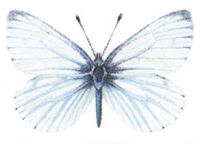
Green-veined White /Artogeia napi
Common and widespread. Similar to Small White except for veins on underside of wing.
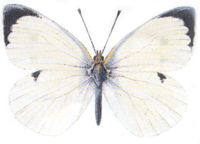
Large White/Pieris brassicae
Very common and widespread.
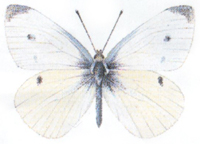
Small White/Artogeia rapae
Very common and widespread. Similar to Large White in appearance.
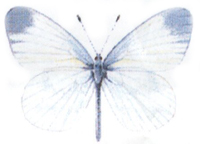
Wood White/Leptidea sinapis
Widespread. Found mostly at woodland margins, hedgegrows.
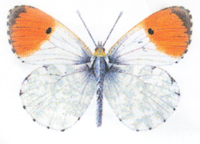
Orange Tip/Anthocharis cardamines
Common and widespread. Roadsides, wet meadows and marshes.
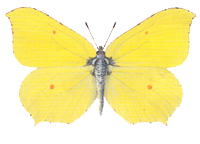
Brimstone/Gonepteryx rhamni
Likes Buckthorn Plants
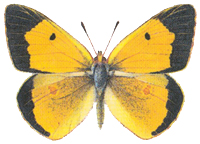
Clouded Yellow/Colias crocea
Migrant, mainly found in southern and coastal areas. More likely to be seen during good weather.
BLUES
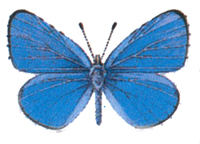
Holly Blue/Celastrina argiolus
Found near remnants of woodland with Holly and Ivy. Looks like Common Blue.
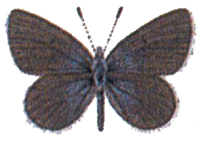
Small Blue/Cupido minimus
Scarce and local. Darker than Common Blue. Easy to overlook. Mainly coastal sand dunes and areas of chalky ground.
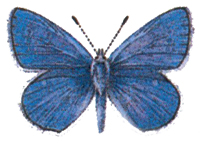
Common Blue/Polyommatus icarus
Widespread and Common. Orange spots on underwing at edge.
HAIRSTREAKS AND COPPER
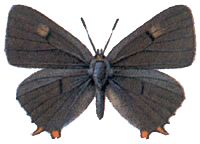
Brown Hairstreak/Thecla betulae
Mostly found in Galway, Clare, and W. Tipperary. Tends to fly very high and eggs found near Blackthorn in winter.
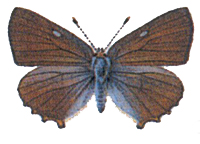
Green Hairstreak/ Callophrys rubi
Found throughout Ireland but not common. It likes Gorse (Ulex europaenus), Bilberry (Vaccinium myrtillus), Broom (Cytisus scoparius), Bird’s-foot-trefoil (Lotus corniculatus).
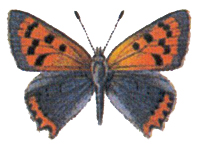
Small Copper/Lycaena phlaeas
Widespread throughout Ireland and fairly common. Likes Dock and Sorrell
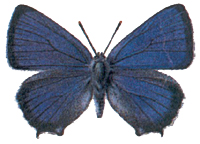
Purple Hairstreak:
Rare, in Oak woods. Difficult to see as it flies on canopy of Oak and Ash.
BROWNS
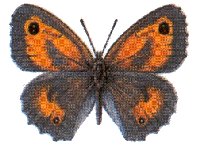
Gatekeeper/Pyronia tithonus
Found mostly in south / south-east of country, in coastal areas. Likes hedgerows, and woodland margins. More common in damp meadows, marshes, along hedgerows
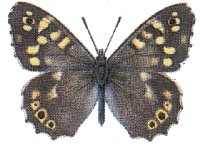
Speckled Wood/Parage aegeria
Widespread and common. Territorial. Likes woodland clearings, hedgerows and fields.
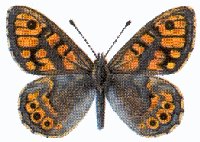
Wall Brown/Lasiommata megera
Widespread. Likes basking on rocks, walls and sun-baked ground. Alert, difficult to approach. Likes grasses.
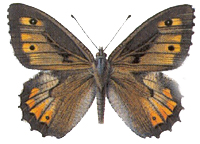
Grayling/Hipparchia semele
Fairly common in dry, rocky or sandy areas, especially coastal. Well camouflaged. Likes grasses.
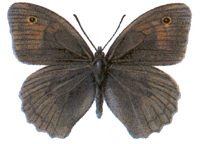
Meadow Brown/Maniola jurtina
Common and widespread in meadows and grassy places. Does not fly well.
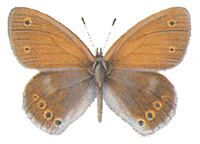
Large Heath/Coenonympha tullia
Local, uncommon, in boggy areas. Much habitat loss. Weak flier. Likes plants found in boggy ground
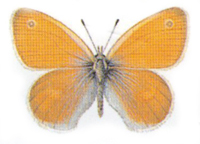
Small Heath/Coenonympha pamphilus
Widespread and common. Likes heathland and grassy places. Not a good flier.
VANESSIDS AND FRITILLARIES and Skipper
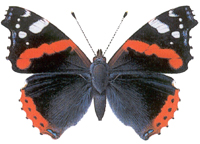
Red Admiral/Vanessa alalanta
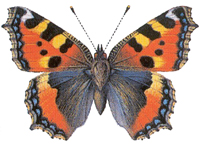
Small Tortoishell/Aglais urticae
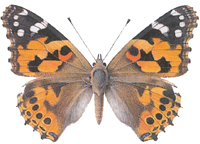
Painted Lady/Vanessa cardui
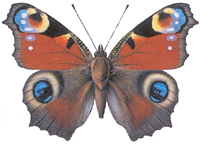
Peacock/Inachis io
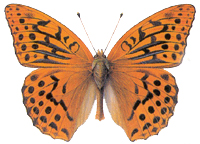
Silver-washed Fritillary/Argynnis paphia
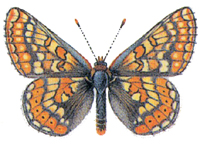
March Fritillary/Euphydryas aurinia
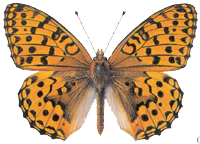
Dark Green Fritillary/Argynnis aglaja
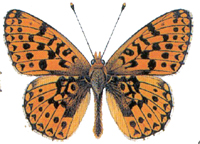
Pearl-bordered Fritillary/Clossiana euphrosyne
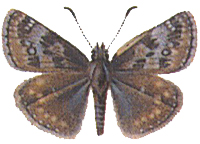
SKIPPER Dingy/Erynnis tages
Local, especially in limestone areas and on eskers. Sun lover. Fast flier. Dayflying Mother Shipton and Burnet Companion moths are ‘lookalikes’. FP = Bird’s-foot-trefoil (Lotus cornicultatus).
